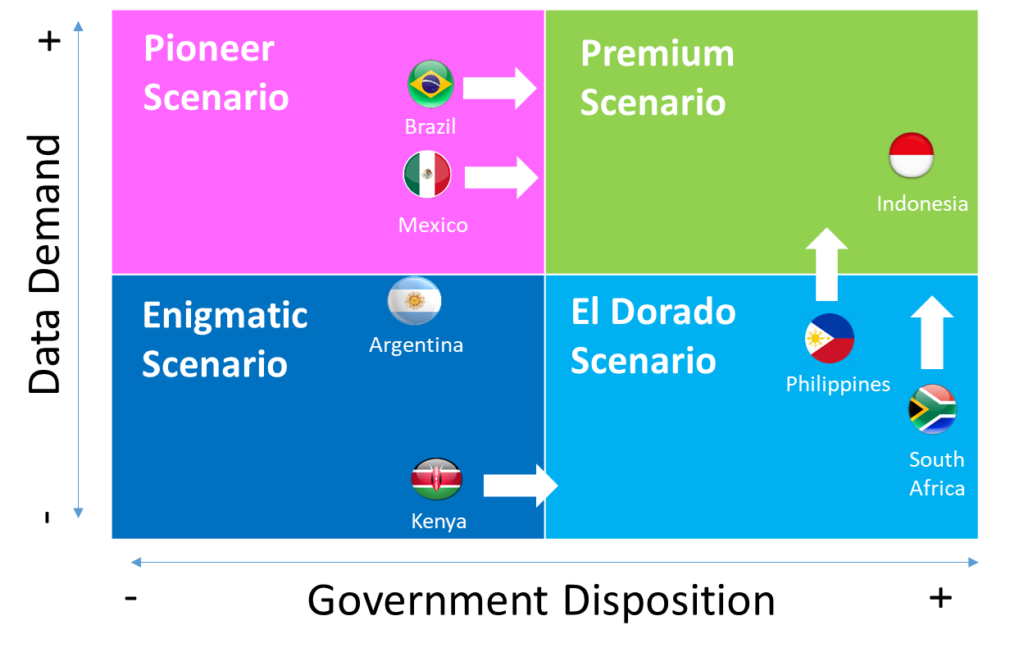Contenu uniquement disponible en anglais.
Q: Why is so important to pay a specific attention to FTTH in emerging countries?
Certainly, there has been a rough evolution in how society is adopting data services in their daily practices. This has generated an increasing change in data consumption patterns where information is transferred along reliable infrastructures, such as fiber, to the final user in order to provide short response times and to deliver big amount of data through video or audio content. As this is something that is global, emerging countries are part of these trends. Fiber to the home (FTTH) is the end game for many players to deliver short latency times and big amount of content to their final users. In emerging regions this is translated into a potential opportunity window that should be considered by many players in the industry.
In this sense, we have performed an analysis that will provide a guideline to those decision makers. We want to highlight the important topics to be considered in FTTH deployment in emerging countries. For this, we have conceived a four-scenario classification with the objective to provide some insights to telecom players and governments to understand what variables should be considered when deploying a FTTH network in an emerging country.
Q: What approach do you propose to analyse the diversity of such different countries?
Actually, two dimensions can influence the deployment of FTTH projects in emerging countries: the willingness of the government to collaborate on this kind of project, and the dynamism of the country based on its data demands and data consumption.
From this, four scenarios can be created: the Premium scenario, with high data demand and high government involvement; the El Dorado Scenario, with low data demand but strong government participation; the Pioneer scenario, with high data demand but low government involvement and the Enigmatic scenario, with an unknown destination based on low data demand and low implication of government.
In order to understand how players have evolved in these scenarios, we have selected, in this edition, seven emerging countries as a way to gather insights and to show different approaches adopted in different regions. For each country, a global overview is performed in terms of technological status, government implication, telecom market review, FTTH strategies adopted by the main players and forecast as well.
Certainly, the main idea of these studies is to add in each edition more emerging countries in order to provide a real panorama of what is happening in those emerging economies. Those emerging countries commonly tend to be underestimated; however, at the end of the day, they represent a considerable piece of the market and therefore, an important business opportunity.
Classification of seven emerging countries in the 4-scenarios approach

Q: Have you identified some drivers able to speed up FTTH deployment?
We can mention five main drivers. The networks of today demand the delivery of higher bandwidth speeds with low latencies, high stability and high scalability. In this sense, the telecom industry has adopted a new approach and it has found fibre as one response in adapting all such features to improve the connectivity experience of each user. There is no doubt that fibre encourages data consumption and supports the daily operations of many platforms oriented to improve people’s quality of life.
However, the execution of fibre deployment do take some time and financial effort. That is the reason why Telecom players perform an exhaustive assessment in order ‘to go’ or ‘not to go’ in them. Their analysis takes into account not only the benefits for the end users but also, an acceptable return on investment rate and the level of risk that shareholders could manage.
Several region including Europe and in some Asian countries such as Singapore, Japan and China have do the numbers and they have realized about the benefits of this solution, so they have started the migration of existing data networks towards fibre. In this sense, now the attention has to be focused in those countries where a slow deployment of this technology is limiting social development and increasing digital exclusion gap. There is, then, a window of opportunity open for telecom players.
In conclusion, the deployment of FTTH networks in emerging countries is already taking place. There is no doubt that this will represent a positive move for many players, but only if they understand the type of market they will operate and if they take into account those specific variables that apply to these nations.
Pour aller plus loin sur cette thématique
Achetez notre dernier rapport "FTTH rollout strategies in emerging countries"
En savoir plusTags

